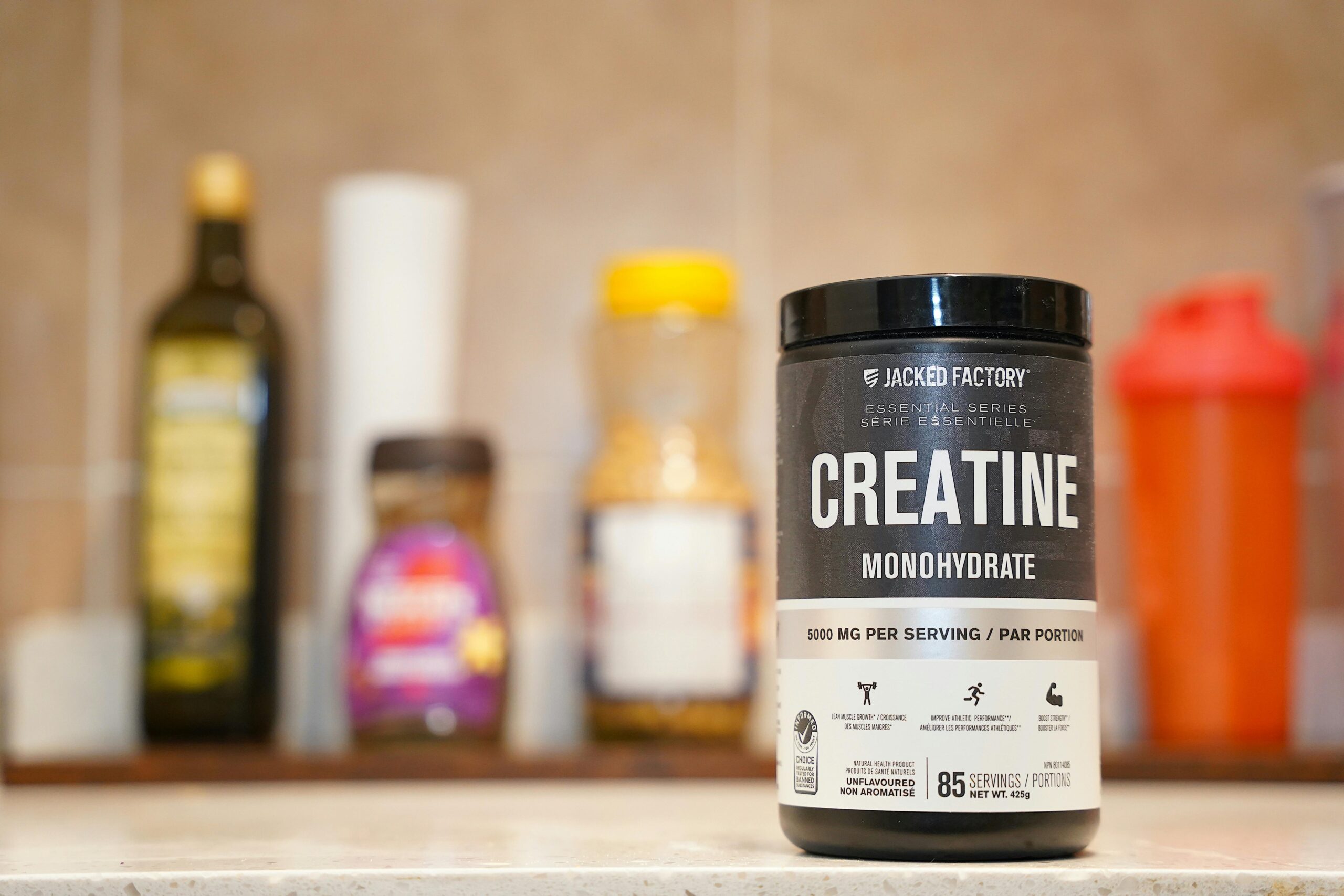Pre-workout supplements can give your training a serious boost, but they can also come with side effects that aren’t always pleasant. Some, like tingling skin or a quick energy surge, are signs your supplement is kicking in. Others, such as dizziness or a racing heart, may mean your body’s reacting too strongly.
These reactions mainly depend on how your body handles ingredients like caffeine, beta-alanine, and nitric oxide boosters. A scoop that works perfectly for one person can feel overwhelming for another, especially for beginners still building tolerance.
That’s why understanding why these side effects happen matters. This guide breaks down the good and the bad, explaining what each sensation means, what causes it, and how to manage it safely so you can get the benefits of your pre-workout without the unwanted aftermath.
Why Do Pre-Workout Side Effects Happen?
Pre-workout supplements are built to enhance your performance: sharper focus, longer stamina, and better pumps. But those benefits often come with trade-offs. Some side effects, like jitters or a flushed, tingling sensation, are common signals that your body’s reacting to the formula. Others, such as dizziness or a racing heart, may suggest your dosage is too high or that your system is overstimulated.
This happens because many pre-workout ingredients directly affect your nervous system, blood flow, and energy levels. If you are sensitive or new to pre-workouts, the reaction can feel intense, especially when ingredients like caffeine or beta-alanine are dosed too high.
Here’s how the most common ingredients work and what reactions they can cause:
- Caffeine: Known for sharpening focus and increasing energy, but it can temporarily raise heart rate or cause jitters, especially in sensitive users. Learn more about the benefits and side effects of caffeine.
- Beta-alanine: Responsible for the tingling or flushing sensation many feel (called paraesthesia). It’s harmless and signals improved muscle endurance. Read more on the effects of beta-alanine on performance.
- Nitric oxide boosters (like L-citrulline): These increase blood flow for better muscle pumps. Some may have slightly lower blood pressure, which can cause light-headedness if dehydrated.
Understanding what causes these effects helps you distinguish between a helpful response and a warning sign. It also lets you tweak your dosage or timing so you get all the upside without the crash. You can read our complete pre-workout beginner’s guide.
Which Pre Workout Side Effects Are Helpful (and Why They Happen)
Not all pre-workout side effects are harmful. In fact, some are signs your supplement is doing precisely what it should. If you feel a bit of tingling, a lift in mood, or an energy rush, your body is responding to the ingredients as intended.
Pre-workouts are designed to increase energy, sharpen focus, and help you push harder in your workouts. When you feel certain physical or mental changes, like a buzz of alertness or a warm “pump” in your muscles, it often means the supplement is activating its key ingredients.
Here are a few of the positive side effects that show your pre-workout is working:
- Pre-workout tingles (beta-alanine flush): This harmless tingling is caused by beta-alanine and often shows up in the face, hands, or arms. It’s a sign your endurance system is kicking in, helping delay fatigue during high-intensity sets.
- Improved focus and alertness: Caffeine and other mild stimulants help you stay mentally dialed in. You might feel more motivated, less distracted, and more likely to finish that tough workout.
- Increased circulation and muscle pumps: Dietary supplements that improve nitric oxide synthesis, such as L-citrulline, help widen your blood vessels. This allows more oxygen and nutrients to reach your muscles, giving you a fuller, tighter feeling during resistance training.
- Elevated mood or drive: Some ingredients boost dopamine production, which can make you feel more positive, determined, and ready to take on your workout.
Feeling these effects in moderation is usually a good sign. The real skill is telling the difference between effective stimulation and overdoing it, so you can push harder without crashing.
Which Pre-Workout Side Effects Are Harmful or Unsafe to Ignore
While some side effects are expected, others are your body’s way of waving a red flag. These are signs that your system is overstimulated, and ignoring them can backfire on your workout, recovery, and even your long-term health.
Pre-workouts are meant to enhance energy and performance, but if the dose is too high or your body isn’t reacting well, the same ingredients that give you a boost can quickly turn into a burden.
Here are a few symptoms you shouldn’t ignore:
- Racing heart or irregular heartbeat: If you notice your heart pounding unusually fast, especially while at rest, it could mean your cardiovascular system is under excessive stress. This is one of the more serious heart rate risks linked to high-stimulant formulas.
- Nausea or dizziness: Feeling sick or light-headed may be caused by dehydration or too much nitric oxide, which can lower your blood pressure more than intended.
- Shakiness, nervousness, or anxiety: A surge in caffeine, especially when stacked with other stimulants, can lead to intense jitters, restlessness, or a sense of unease that lingers beyond the workout.
- Insomnia or poor sleep quality: Taking pre-workout too late in the day can disrupt your natural sleep rhythm, making it harder to recover and perform the next day.
If you experience any of these, don’t just power through. Cut your dosage, hydrate well, and consider switching to a lower-stimulant formula. And if symptoms persist, check in with a health professional.
The right pre-workout should help you lift more, not leave you feeling wrecked afterward.
How Do Ingredients Impact Different Pre-Workout Side Effects?
Not all pre-workouts are created equal, and the ingredients in your scoop play a huge role in how your body reacts. Some ingredients are great for energy, endurance, or circulation. But depending on your sensitivity and dosage, those same ingredients can trigger side effects like tingling, bloating, or even sleep issues.
Knowing what’s inside your supplement helps you make smarter choices, especially if you’ve experienced uncomfortable reactions before.
Here’s a breakdown of common pre-workout ingredients and the side effects they’re known for:
| Ingredient | Side Effect | Why it happens |
| Caffeine | Jitters, anxiety, sleep problems, increased blood pressure, stomach upset | A central nervous system stimulant that boosts energy but can overstimulate and increase stomach acid. |
| Creatine | Bloating and water retention | Pulls water into muscle cells, helpful for strength, but can cause bloating if not balanced with hydration. |
| Beta-alanine | Tingling, itching, “pins and needles” sensation (paraesthesia) | A harmless nerve reaction that often shows up in the face, hands, or arms. |
| Niacin (Viatmin B3) | Skin flushing, redness, and itching | Dilates blood vessels near the skin surface, creating a flushing sensation. |
| Sodium Bicarbonate | Bloating, gas, nausea, diarrhea | It can irritate the stomach lining or act as a laxative in large doses. |
| Citrulline | Headaches | Boosts nitric oxide for blood flow, but may slightly lower blood pressure in some people. |
| Artificial Sweeteners | Gas, bloating, and diarrhea | Some people are sensitive to sugar substitutes like sucralose or sorbitol. |
Understanding your tolerance to these ingredients lets you build a supplement stack that works with your body and not against it. If certain side effects keep showing up, you might benefit from switching to a simpler formula, lowering the dose, or cycling off occasionally to reset.
The goal isn’t to eliminate every sensation. It’s about finding the right balance, where your pre-workout pushes your performance, not your limits.
Can Your Fitness Level or Tolerance Affect Pre-Workout Side Effects?
Your response to pre-workout doesn’t just depend on what’s in the scoop, it also depends on who you are and how long you’ve been training. Whether you’re a beginner or a seasoned athlete, your tolerance plays a significant role in how your body reacts.
If you’re new to supplements or sensitive to caffeine, even a small dose might hit hard. Tingling, jitteriness, or a racing heart are all more likely in the early stages. But over time, your body adapts, and you might notice the same serving feels milder or even ineffective unless adjusted.
Here’s how tolerance typically builds with experience:
- Beginners often experience stronger reactions, such as tingling, a rapid heartbeat, or a sudden energy spike. Their system isn’t set up to handle stimulant-based formulas yet.
- Intermediate users develop a baseline tolerance. Side effects decrease, but the focus and endurance benefits remain.
- Advanced athletes may handle higher doses with fewer noticeable effects. But there’s a trade-off: long-term reliance can lead to diminishing returns and overuse fatigue.
Tolerance isn’t permanent, and that’s actually a good thing. Taking regular breaks (known as cycling off), having a beginner fitness plan, and adjusting your intake based on how you feel can help you avoid side effects while still getting the performance edge.
How Can You Prevent or Minimize Pre-Workout Side Effects Safely?
You don’t have to ditch your pre-workout just because you’ve felt a few jitters or struggled to sleep. Most side effects come down to two things: dosage and timing. By making a few smart adjustments, you can keep the energy without the crash.
Start with this: Pre-workouts are concentrated. Your body needs time to adjust, especially if you’re new to or sensitive to caffeine. Instead of going full scoop on day one, work your way up gradually while paying attention to how you feel.
Here are simple ways to reduce side effects without losing performance benefits:
- Start with half a dose: Let your body adapt slowly before going all in.
- Hydrate well: Water helps your body process stimulants and prevents side effects like nausea or dizziness.
- Avoid taking it too late: Aim to consume your pre-workout at least 4–6 hours before bed to protect your sleep cycle.
- Watch your total caffeine intake: Factor in coffee, tea, or other supplements. It all adds up.
- Read the label: Choose products that clearly show ingredient amounts and avoid proprietary blends or banned substances.
These minor tweaks can make a big difference. Managing pre-workout side effects isn’t about avoiding every sensation, it’s about staying in control, listening to your body, and using the supplement to support your workout, not sabotage it.
Conclusion: Use Pre-Workout with Awareness, Not Excess
Some side effects —tingles, energy, and better pumps — mean your pre-workout is doing its job. Others, like nausea or a racing heart, are red flags. The difference comes down to knowing your tolerance and understanding what each ingredient does.
To stay safe and get the most out of your supplement:
- Start low and monitor your response.
- Hydrate and time your dose wisely.
- Take breaks to avoid building up tolerance.
Pre-workout should support your goals. Use it intentionally, listen to your body, and you’ll get the edge you want without the setbacks.
Frequently Asked Questions
Commonly asked questions about pre-workout side effects.


